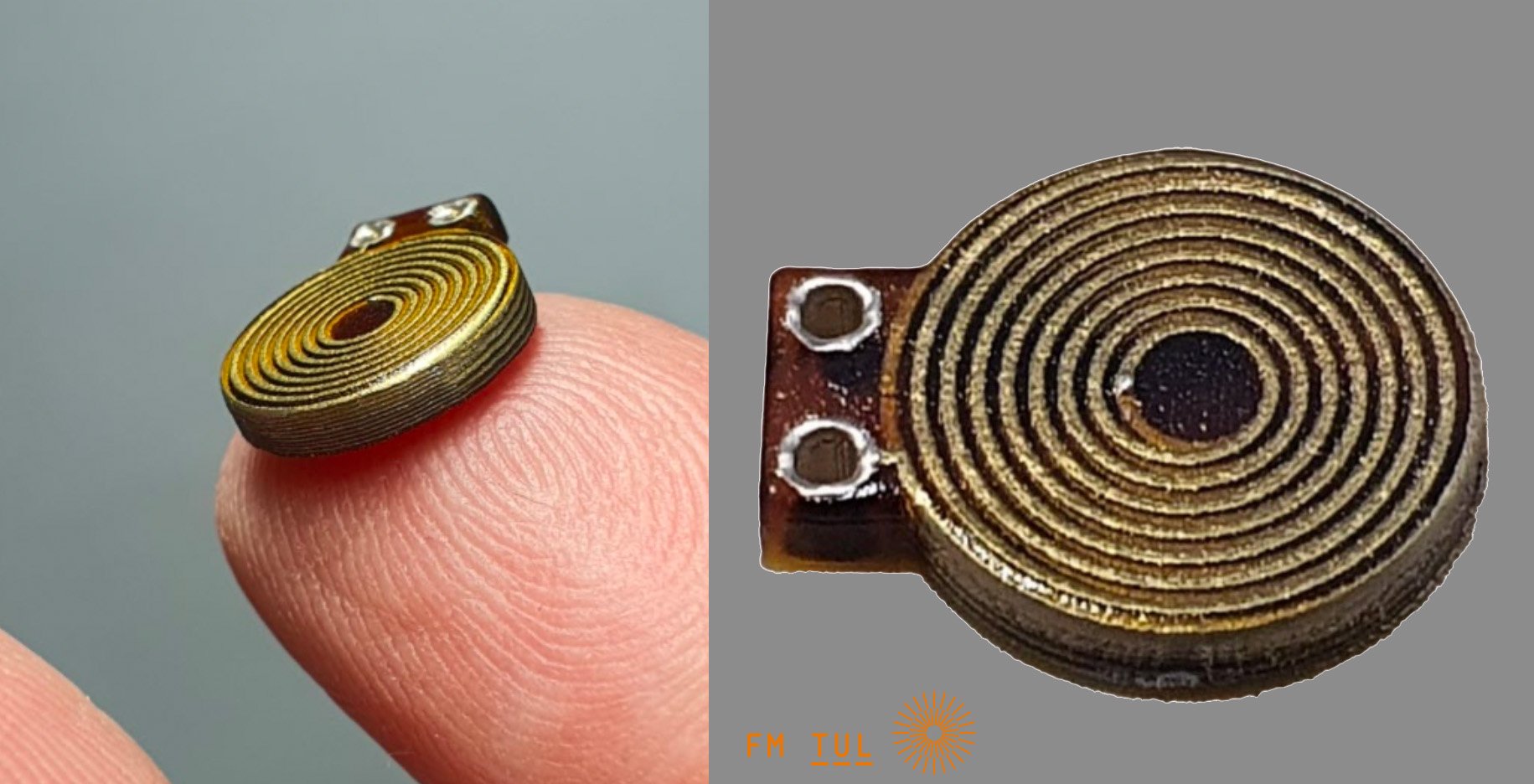TU-Liberec - 3D Printed Coil

To explore the feasibility of using 3D printing technology for creating measuring coils, specifically for medical applications such as detecting electromagnetic interference in pacemakers. This paper was written by Prof. Ing. Zdeněk Plíva, Ph.D., Ing. Leoš Petržílka, Prof. Ing. Aleš Richter, CSc.
Overview
This study focuses on designing a 3D-printed coil for medical applications, specifically addressing electromagnetic interference (EMI) in pacemakers. After collaborative discussions with various medical centers, the project identified the need for a wearable external sensor to detect and monitor EMI, especially in environments with dangerous exposure to electromagnetic radiation.
The coil is produced using Nano Dimension's Dragonfly LDM 2.0 3D printer, which introduces a new approach to PCB manufacturing. This method allows for more intricate coil geometries in 3D space, improving energy density, inductive properties, and reducing waste compared to conventional techniques. The sensor's biocompatibility and compliance with medical standards make it suitable for clinical research.
Key Aspects
- Medical relevance: The study addresses how pacemakers can malfunction due to electromagnetic interference, offering a real-time monitoring solution with wearable sensors.
- 3D Printing Technology: The research validates the use of 3D printing (Dragonfly LDM 2.0) to create complex coil shapes, reducing production waste and improving performance.
- Advanced Engineering: The coil was designed using Autodesk Fusion 360 and validated through Ansys simulations, optimizing its inductive and capacitive characteristics.
- Biocompatibility: The sensor is certified for medical applications, ensuring safety in both in-vitro and in-vivo uses.
The study results encourage the use of 3D-printed electronics in clinical research and medical devices.
Printed Fluxgate Sensor
Using 3D printing to produce Printed Fluxgate Sensor
Motivated by prof. Ripka from CTU in Prague, realization of sensor manufacturing by 3D printing technology. Realised with inserted metalic core (Vitrokov) fixed by Chipquik nonconductive chip glue, printing process in four steps, without removing from the printer.








